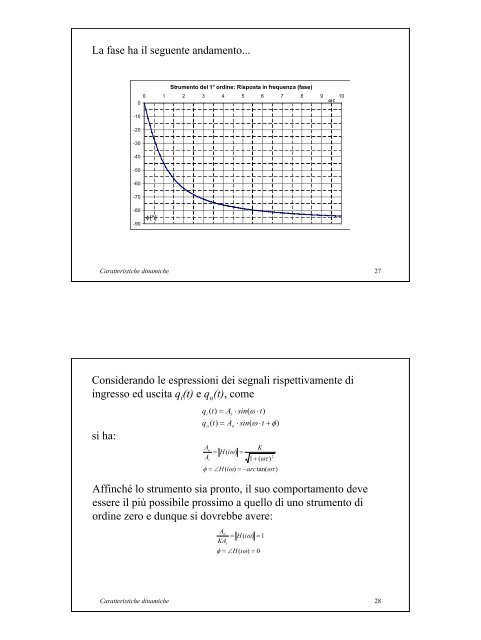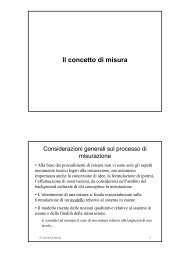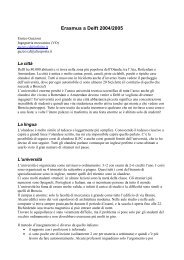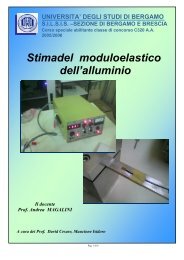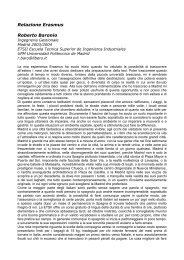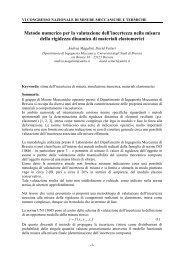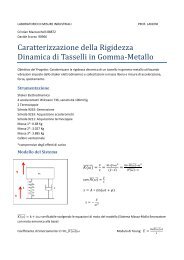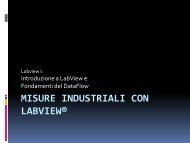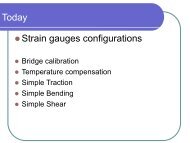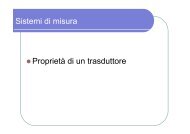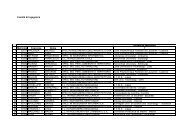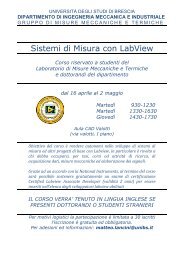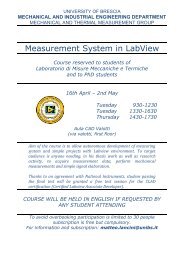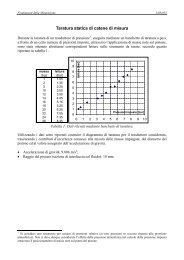Caratteristiche dinamiche degli strumenti di misura - ArchiMeDes
Caratteristiche dinamiche degli strumenti di misura - ArchiMeDes
Caratteristiche dinamiche degli strumenti di misura - ArchiMeDes
You also want an ePaper? Increase the reach of your titles
YUMPU automatically turns print PDFs into web optimized ePapers that Google loves.
La fase ha il seguente andamento...<br />
-10<br />
-20<br />
-30<br />
-40<br />
-50<br />
-60<br />
-70<br />
-80<br />
-90<br />
Strumento del 1° or<strong>di</strong>ne: Risposta in frequenza (fase)<br />
0 1 2 3 4 5 6 7 8 9 10<br />
ωτ<br />
0<br />
φ[°]<br />
<strong>Caratteristiche</strong> <strong><strong>di</strong>namiche</strong> 27<br />
Considerando le espressioni dei segnali rispettivamente <strong>di</strong><br />
ingresso ed uscita q i (t) e q o (t), come<br />
si ha:<br />
q ( t)<br />
= A ⋅ sin(<br />
ω ⋅t<br />
)<br />
i<br />
q ( t)<br />
= A ⋅ sin(<br />
ω ⋅ t + φ)<br />
o<br />
i<br />
o<br />
Ao<br />
K<br />
= H ( iω)<br />
=<br />
A<br />
2<br />
i<br />
1+<br />
( ωτ )<br />
φ = ∠H<br />
( iω)<br />
= −arc<br />
tan( ωτ )<br />
Affinché lo strumento sia pronto, il suo comportamento deve<br />
essere il più possibile prossimo a quello <strong>di</strong> uno strumento <strong>di</strong><br />
or<strong>di</strong>ne zero e dunque si dovrebbe avere:<br />
Ao<br />
= H ( iω)<br />
= 1<br />
KAi<br />
φ = ∠H<br />
( iω)<br />
= 0<br />
<strong>Caratteristiche</strong> <strong><strong>di</strong>namiche</strong> 28


